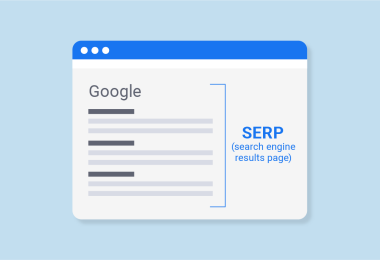User experience (UX) plays a significant role in determining the ranking of a website on search engines. Google aims to provide the best possible user experience to its users by showing relevant and high-quality results for their search queries. Therefore, if your website offers a poor user experience, it can negatively impact your SEO efforts in the following ways:
High Bounce Rate
If users click on your website from search results and quickly leave, it indicates that they didn’t find what they were looking for, resulting in a high bounce rate. A high bounce rate can signal to search engines that your website does not provide the right information, leading to a drop in search rankings.
The bounce rate is calculated by dividing the number of single-page sessions by the total number of sessions and multiplying by 100. You can easily track this number using Google Analytics.
Low Time on Site
If users spend only a few seconds on your website before leaving, it indicates that your content is not engaging or valuable. Low time on site can negatively impact your search engine rankings, as it indicates that users are not finding what they need on your website.
Pogo sticking
Pogo sticking refers to the act of quickly bouncing back and forth between a search engine results page (SERP) and a website. This occurs when a user clicks on a search result, visits the website, but then quickly returns to the SERP and clicks on another search result.
Pogo sticking is typically a sign that the user did not find what they were looking for on the initial website they visited. It may indicate that the website’s content, design, or user experience did not meet the user’s expectations or needs.
Pogo sticking can negatively impact a website’s search engine optimization (SEO) as search engines may interpret it as a signal that the website does not satisfy the user’s search intent. Search engines may then lower the website’s ranking in search results, making it less likely that users will find the website in the future.
What affects these SEO and UX metrics?
Navigation
Good website architecture helps visitors find the information they’re looking for quickly and easily. A clear and easy-to-use navigation system can help users quickly find what they’re looking for, reducing frustration and improving their experience. When visitors can easily navigate your website, they’re more likely to engage with your content and spend more time on your site. This can help increase your conversion rates, as well as your search engine rankings.
A well-designed navigation system can make your website look more professional and trustworthy. This can help build credibility with your audience and increase the likelihood that they will return to your website in the future. Consistent navigation across your website can help visitors better understand your website structure and easily find their way around. Use internal links to enhance user behavior within your website or landing page. This is helpful for both SEO and user experience.
Page responsiveness
With the majority of internet traffic coming from mobile devices, having a responsive website is crucial for ensuring that your content is accessible to all users. A responsive website adapts to the screen size of the device being used, making it easy to read and navigate on any device. Make sure that your website is accessible and functional across all devices and screen sizes. A responsive website provides a seamless user experience, while a non-responsive website can be frustrating and difficult to use on certain devices.
Moreover, responsive web design optimizes images, reduces HTTP requests, and minimizes page weight, leading to faster web page load times. Faster loading web pages create a positive user experience, as users are less likely to abandon a site that loads quickly.
Here is a tool we recommend to use for responsive testing: https://www.browserstack.com/responsive
It shows how your website looks on different devices, so you can find out what you need to improve.
Google’s algorithm also favors responsive websites, and it’s a ranking factor in search results. A responsive website will improve your technical SEO, making it easier for users to find your site when they search for relevant keywords.
A few words about mobile-first
Mobile-first means designing and developing a website or application with the mobile user experience as the top priority. It’s a UX design approach that focuses on user interaction and creating a mobile-friendly experience first, then adapting it to larger screens such as desktops or tablets.
In the past, many websites were designed for desktop computers first, and then adapted to mobile devices. However, with the increasing number of mobile users, UX designers practice the mobile-first approach.
Talking about mobile -first, UX and SEO teams give these tips on how to improve on page SEO and user engagement:
- Prioritize content: Mobile screens have less real estate, so it’s important to prioritize the most important content and features.
- Streamline navigation: Navigation should be simple and easy to use on a mobile device. Easy navigation is good for search engine crawlers, as well.
- Using responsive design: Responsive design allows a website to adapt to different screen sizes, making it easy to view and use on any device.
- Optimizing page speed: Mobile users expect fast-loading pages, so it’s important to optimize page speed for mobile devices.
- Testing on mobile devices: Mobile-first design requires testing on actual mobile devices to ensure the best website’s user experience.
Page Speed
Slow loading websites frustrate users, and they are likely to abandon your website if it takes too long to load. Google has stated that page load time is a crucial factor in their search engine ranking algorithm. Websites that load faster are likely to rank higher in search engine results, which can result in more traffic and better visibility. A fast-loading website can also result in increased conversion rates. Users are more likely to convert (purchase a product or fill out a form) on a website that loads quickly and provides a smooth user experience.
Content quality
Quality content is well-researched, accurate, and up-to-date. It provides value to the reader, viewer, or listener, and serves a specific purpose. Improve user comprehension by presenting information in a clear and concise manner, making it easy to understand and digest. Likewise, it should also be well-written or well-produced, with attention paid to grammar, spelling, and formatting.
Speak the users’ language
Write content that is relevant to its intended audience. It should address their needs, interests, and concerns. This is where UX and SEO come together: it would be a good idea to conduct keyword research every time you wish to publish the content. Keyword research helps identify users’ intention, i.e. what they want to find when making a search query in Google.
In addition to such tools as ahrefs, Rush Analytics keyword suggestion tool and Mangools, use services that help you identify users questions. We like alsoasked, frase.io and People Also Ask.
Understand your audience
Get to know your audience by researching their demographics, needs, interests, and pain points. This will help you understand how they communicate and what language they use. Use simple language: avoid technical jargon, acronyms, and industry-specific terms that may confuse your audience. Instead, use simple language that is easy to understand and relatable.
We often check how easy to understand our content is by using writer.com. For example, this article has 7.8 points, which equals “fairly easy to read”.
Use visuals
Visuals such as images, videos, and infographics can quickly grab the user’s attention and communicate a message or idea effectively. This is especially important in today’s digital age, where users are constantly bombarded with information. Visuals can help to explain complex ideas and concepts more easily than text alone. This can be particularly useful if you’re trying to convey information or instructions to your users.
Visual communication can also be used to reflect your brand’s personality, values, and style. User-friendly resource can help to build brand awareness and recognition, which can be valuable for building customer loyalty.
To create catchy infographics, UX designers recommend using canva.com. It has a simple and intuitive interface that makes it easy to create professional-looking infographics in no time. Canva offers a wide range of customizable templates that can be used to create infographics quickly and easily. These templates are designed by professional designers and are available in various styles, layouts, and themes.
We hope these tips will help you with search engine optimisation and reach your target audience without using any complicated marketing strategies.





